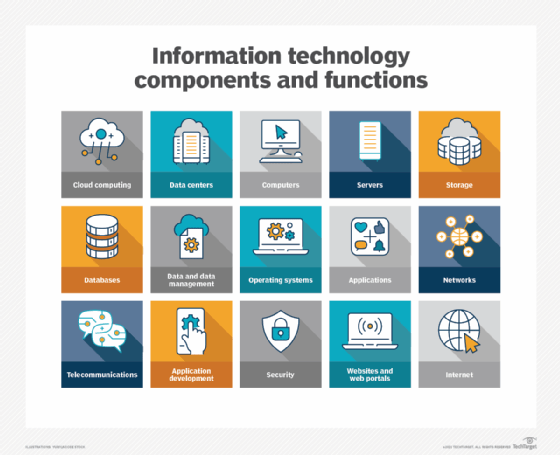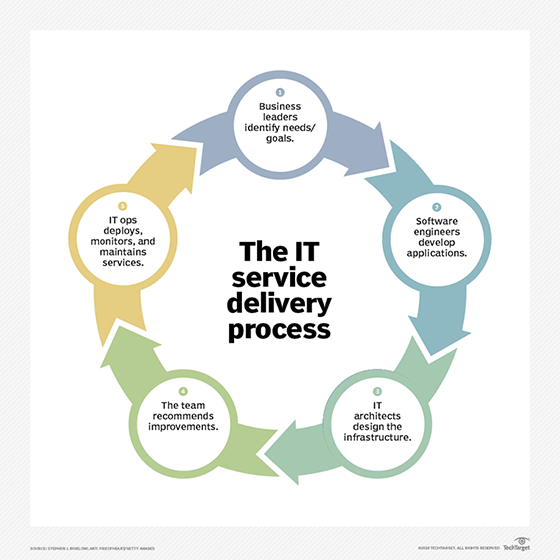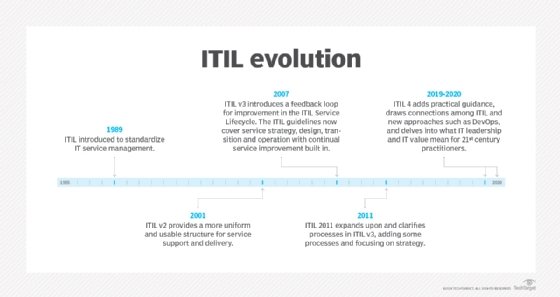What is an IT service catalog?
An IT service catalog is a list of information technology resources and offerings available from the IT service provider within an organization. This catalog is intended to help the IT service provider efficiently and effectively manage and meet end-user expectations. It serves as a bridge between the IT department and the business users, providing a transparent view of what IT services are available and how they can be accessed.
The IT service catalog differs from the IT service portfolio. The IT service catalog is a list of technology services available to users. The IT service portfolio is a complete list of all IT services and products, including those in development and those that have been retired, in addition to those currently in use.
The catalog focuses on current, active services that users can request, making it a practical tool for daily operations.

Necessary IT service catalog components
An IT service catalog contains information about deliverables, prices, contact points and processes for requesting a service. Typically, a catalog will have two views: a customer-facing view from which business users can browse and select services and a technical view for IT staff.
The customer-facing view of the IT service catalog is typically offered via a self-service portal that allows users to search for needed services and initiate service requests. This portal is designed to be user-friendly, enabling users to quickly find services, understand what each service entails and know how to request it.
Best practices call for designing the customer-facing presentation of the IT service catalog in a user-friendly manner. This ensures that employees from all departments can easily navigate and use the catalog, whether they need IT support, HR services or facilities management.
Some IT service catalogs also provide the user with details such as the service category (i.e., infrastructure, software, hardware, support, etc.), service-level agreements, the service owner, the cost of the service and timelines for delivery. Automation and integration with other IT service management (ITSM) tools can further enhance the efficiency and reliability of these services.
The view for the technical team contains not only the list of services offered but also information that enables IT employees to effectively deliver services, such as details about approval processes for specific services. This internal view ensures that the IT team has all the necessary information to manage and deliver services efficiently.

History and development of the IT service catalog
The IT service catalog arose from the ITIL (Information Technology Infrastructure Library), a framework designed to standardize the selection, planning, delivery and support of a company's IT services. ITIL has played a pivotal role in shaping modern ITSM practices, and the service catalog is a key component of this framework.
The IT service catalog is part of ITIL's Service Design publication, one of the five primary publications within the ITIL Lifecycle Publication Suite. The Service Design publication focuses on the architectures, processes and policies needed by the IT department to design services that meet the overall organization's needs.
More specifically, the use of an IT service catalog was introduced in ITIL V3 as an IT service management best practice. ITIL defines an IT service catalog as a "database or structured document." This formalization in ITIL V3 highlighted the importance of having a clear, organized catalog to manage and deliver IT services effectively.

Experts recommend that if an IT organization is interested in developing an IT service catalog, it should begin by taking inventory of all the services it offers. Once the catalog has been created, someone in the IT department needs to manage the implementation, promotion and lifecycle of the catalog. When possible, it can be helpful to have workflow software automate service delivery.
Benefits of an IT service catalog
A well-designed and effectively implemented IT service catalog allows the IT department to efficiently respond to the user requests that tend to be continuous as modern organizations rely on technology to support or perform increasing amounts of critical business functions. It also serves as a powerful tool for improving transparency, standardizing service offerings and integrating services across departments.
Proponents of IT service catalogs list other benefits associated with their use, such as providing users and the overall organization with greater visibility into the IT department and the value that technology brings to the organization as a whole.
IT service catalogs can also reduce IT service delivery time and costs by improving efficiencies, and can also improve coordination of service delivery personnel and processes. In turn, these business process benefits of using an IT service catalog can lead to overall improvement of customer satisfaction with the IT department.
Explore ITIL and DevOps to see what path an enterprise should choose. See how to plan for a successful ITIL implementation. Understand the differences between IT change management vs. configuration management.






